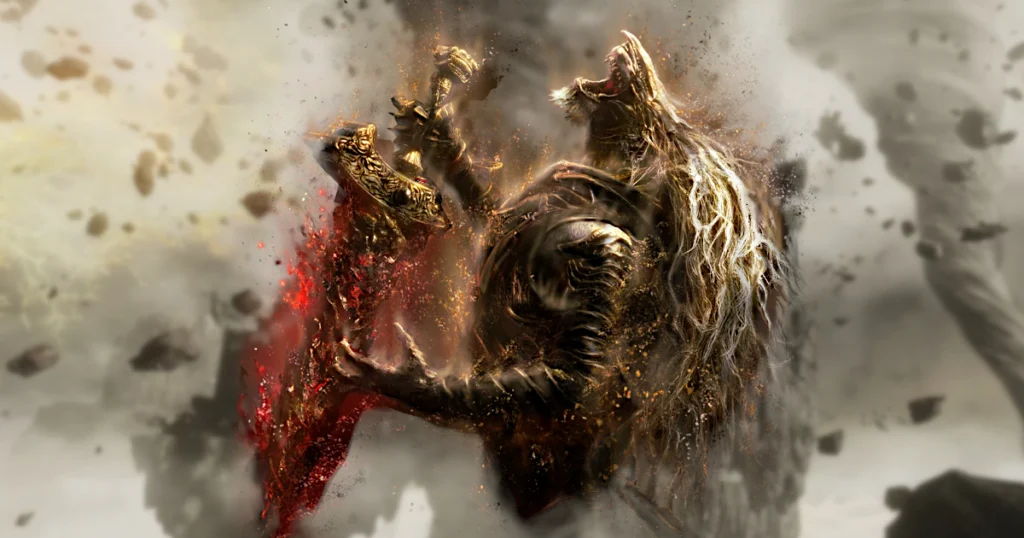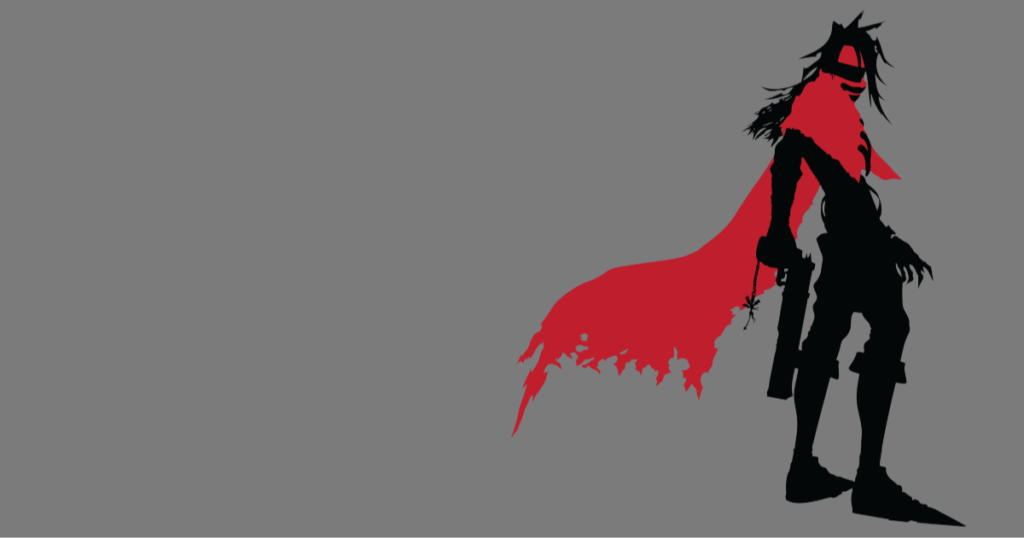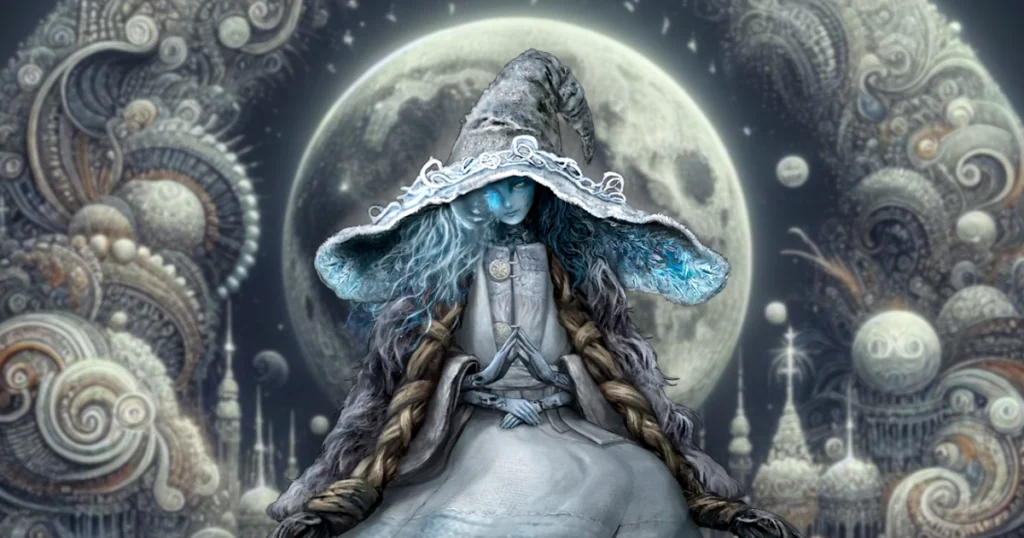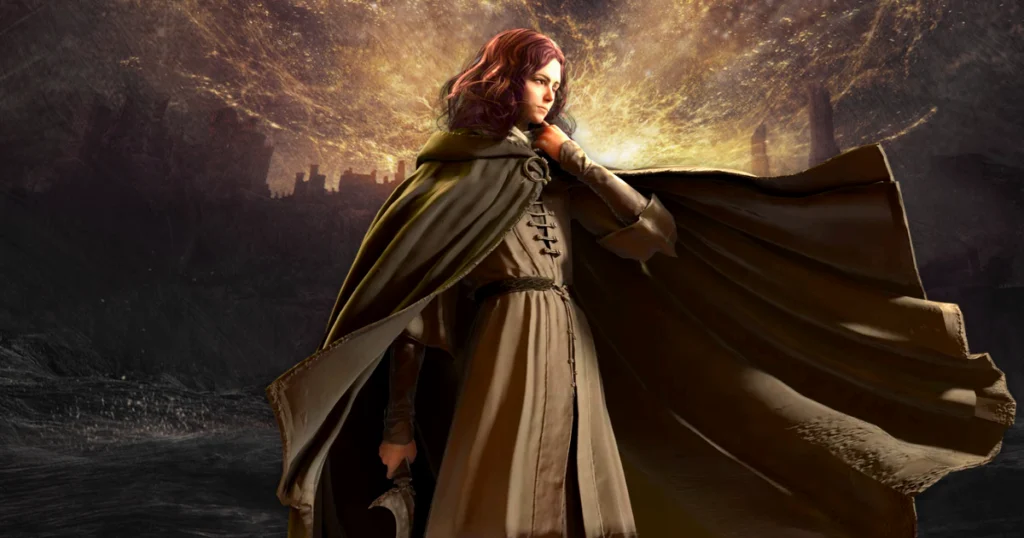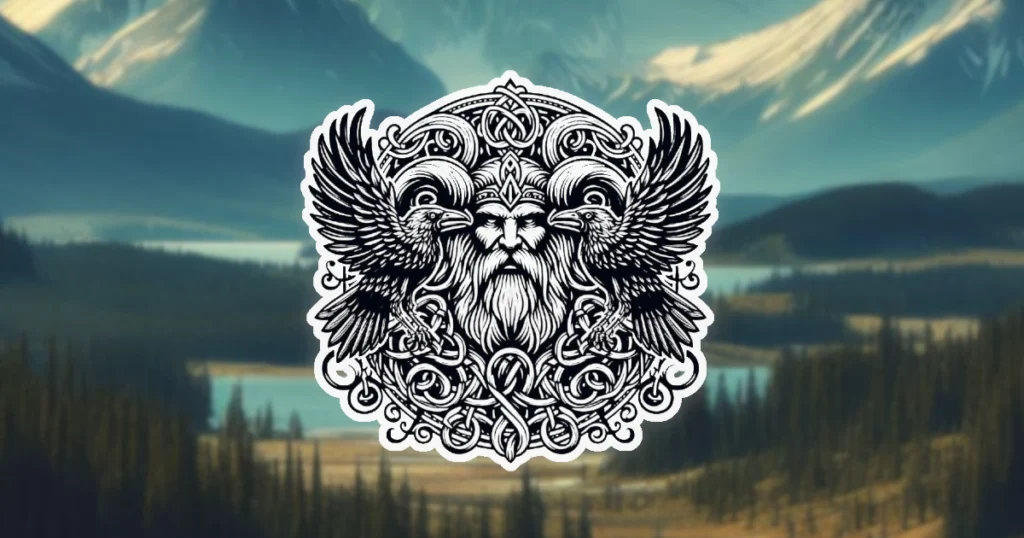
So, you want to learn about Odin, but you have no idea where to start? I completely understand. Before writing this article, I tried YouTube videos and other blog articles which were either incorrect, too verbose, or referring to Marvel. Total Disappointment.
Then I decided to go straight at the two main sources for anything related to Norse Mythology: The Poetic Edda and the Prose Edda. Reading texts from old Icelandic translated to English, which is not even my first language, was a challenging feat.
It was, however, incredibly fun for a lore nerd like me.
In this article I want to help you wrap your head around Odin’s lore. I will cite directly verses from the Poetic or Prose Edda and I will try my best to not be boring as Hel (yeah, that was a pun) in the process. Enjoy!
Who’s Odin?
Odin, first of the Aesir gods, is one of the most ancient creatures in Norse mythology. He is also one of the most powerful ones and goes by many names. Wait there, I meant it. MANY names. Some of my favorite and epic sounding are written in the Prose Edda:
“[…]in the Elder Ásgard he had twelve names: one is Allfather; the second is Lord, or Lord of Hosts; the third is Nikarr, or Spear-Lord; the fourth is Nikudr, or Striker; the fifth is Knower of Many Things; the sixth, Fulfiller of Wishes; the seventh, Far-Speaking One; the eighth, The Shaker, or He that Putteth the Armies to Flight; the ninth, The Burner; the tenth, The Destroyer; the eleventh, The Protector; the twelfth, Gelding.”
– Gylfaginning, p.16
As of now, more than 120 names are attributed to Odin, and you can find the complete list in this wikipedia page.
I would personally focus on the first one I quoted, The Allfather, because it is very pertinent with the origin of his story. You see, Odin is directly involved in the creation of the world.
Odin’s Origin
To understand Odin’s origin, I have to touch upon the creation of the Norse universe itself.
What I am about to write may sound incredibly weird but hang on. Norse mythology can be very… well, just keep an open mind.
The Poetic and Prose Edda tell us two slightly different versions of the myth of the creation of the world. What remains consistent between sources is that at the beginning there was a giant void called Ginnungagap. I know, that’s a mouthful. Aside from Ginnungagap, there were also two worlds existing. The first one was Niflheim, completely covered in ice, and the other one was Muspelheim, which was constantly on fire.
The interaction between the two created two beings. The first one was the Jötunn Ymir, first of the Giants. The second one was Auðumbla, a primordial cow. While Ymir sustained himself by drinking Auðumbla’s milk, the cow’s diet was made entirely of salty ice.
Yes, she basically just licked salty ice blocks, and from one of these a man, named Búri, appeared:
“[…]She licked the ice-blocks, which were salty; and the first day that she licked the blocks, there came forth from the blocks in the evening a man’s hair; the second day, a man’s head; the third day the whole man was there. He is named Búri: he was fair of feature, great and mighty.”
– Gylfaginning, p.20
Búri had a son, Borr, who married the daughter of the Jötunn Bölthorn and had three children: Odin, Vili and Vé.
Odin’s fight against Ymir and the creation of Midgard
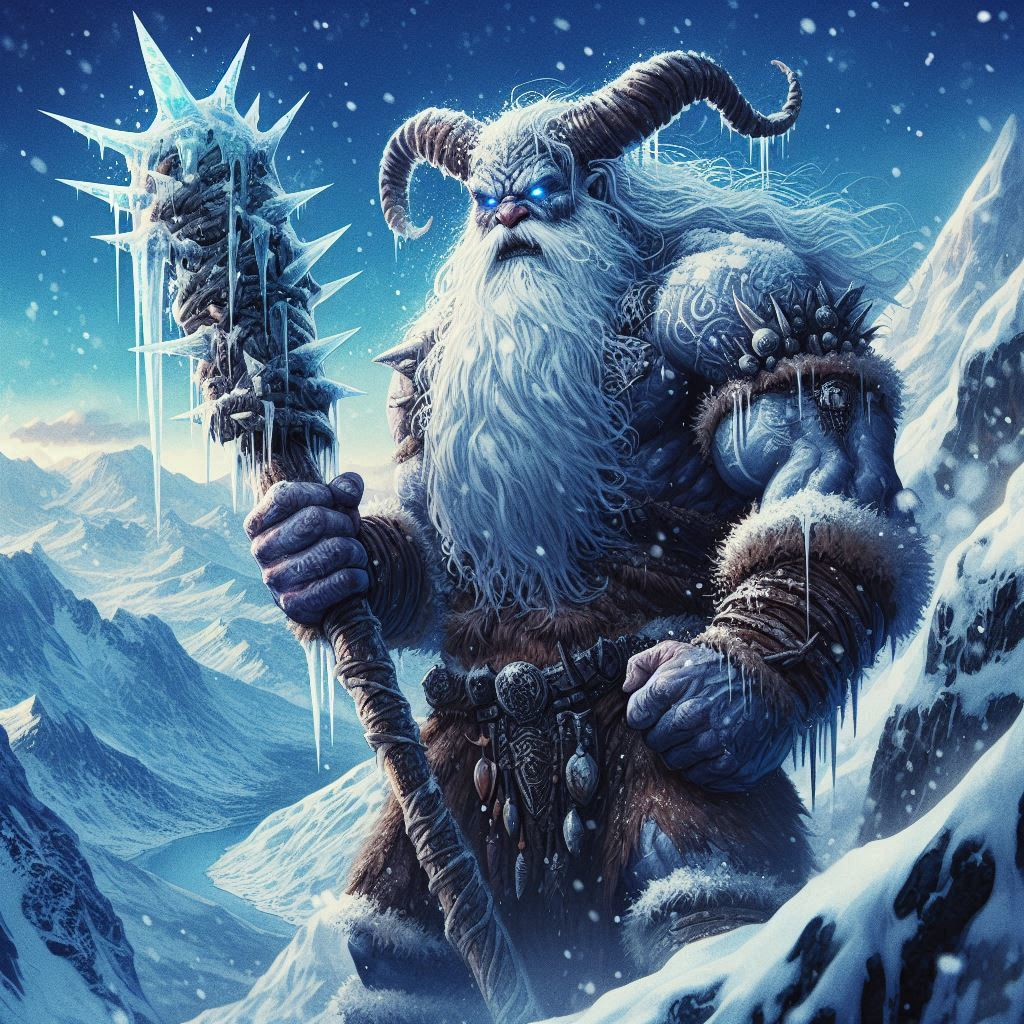
At a certain point in time, Odin and his brothers fought and killed Ymir. The first thing that I asked myself then was: “Wait, was Ymir evil or something?”
Well, one of the warriors in the Valhalla (the hall of dead heroes under Odin’s jurisdiction) says the following about Ymir:
“By no means do we acknowledge him God; he was evil and all his kindred: we call them Rime-Giants”
– Gylfaginning, p.19
What I believe is that Ymir was not necessarily evil. Probably he incarnated the idea of chaos, and Odin has always been seen as the opposite. Order was the main idea that led the motives and principles of the tribe of gods descending from Odin: the Aesir. We can’t exclude the possibility that the character saying the sentence above was biased.
Odin then used parts of Ymir’s body to create the world. This remains kind of consistent between the two Eddas, so here’s an excerpt of this event:
Of Ymir’s flesh was earth created, of his blood the sea, of his bones the hills, of his hair trees and plants, of his skull the heaven;
And of his brows the gentle powers formed Midgard for the sons of men; but of his brain the heavy clouds are all created.
– Grímnismál, Stanzas 40 & 41
The only discrepancies between the sources can be about which parts of Ymir were used to create parts of the world. My favorite difference between the quote written above would be the sea, which in some other sources is said to be born from Ymir’s sweat:
Of Ymir’s flesh | the earth was fashioned,
And of his sweat the sea;
Crags of his bones, | trees of his hair,
And of his skull the sky.
– Völuspá, Stanza 21
Of course, Vikings were epic. Imagine thinking that you are swimming in ice giant sweat every time you go to the sea.
Epic, yes, but also gross.
About the Creation of Mankind
After creating the world, Odin and the bros stumbled upon two trees on the seaside. They shaped them in a human form, named them Askr and Embla, and each brother gave them specific traits:
When the sons of Borr were walking along the sea-strand, they found two trees, and took up the trees and shaped men of them: the first gave them spirit and life; the second, wit and feeling; the third, form, speech, hearing, and sight.
– Gylfaginning, p.22
Odin gave them Midgard as a place to live, while he and the others created a city for the Aesir gods and their affiliates, Asgard.
About the Aesir and Asgard

More than a city, Asgard was a whole world in itself. It is considered as one of the nine worlds in Norse Mythology. Some may think then that Asgard was the home of the gods, but that would not be precise enough. Asgard was home to SOME of the gods. Another tribe of gods, the Vanir, existed in their own world – Vanaheim – but they held different principles than the Aesir. While Odin is called the Allfather, it was not directly related to the birth of any of the Vanir.
Asgard followed the ethics and principles held by the Aesir tribe, that being of Order and Battle, and Odin oversaw the appointment of governors and held judgment every day from the Ash of Yggdrasil, the greatest of the trees:
That is at the Ash of Yggdrasill; there the gods must give judgment everyday. […] The Ash is greatest of all trees and best: its limbs spread out over all the world and stand above heaven.”
– Gylfaginning, p.28
About Odin’s Family
If you are thinking that listing each member of Odin’s family would be too long, since he is the Allfather, you would be right. Let’s just do a quick recap to understand the most important relationships in Odin’s life.
We already know of Odin’s parents-Borr and Bestla- and brothers Vili and Vé. Odin’s wife was Frigg, Queen of Asgard and Goddess associated with fertility, marriage and prophecy.
Odin also had other sexual partners, and the most important of them is in my opinion Jörd, goddess of earth, with whom he conceived Thor, God of thunder and Norse superstar:
“The Earth was his daughter and his wife; on her he begot the first son, which is Ása-Thor: strength and prowess attend him, wherewith he overcometh all living things.”
– Gylfaginning, p.23
Three other gods are quoted to be Odin’s children by several sources:
- Baldr: the most beautiful of the gods and nearly invincible, aside from mistletoe. Think kryptonite, but on Christmas.
- Váli and Víðarr, who prophesied to survive the end of the world, or Ragnarök.
While the following are attested to be Odin’s children only by Snorri Sturluson, author of the Prose Edda:
- Heimdallr: sentinel and guardian of the Bifröst, a rainbow bridge that connects Asgard to Midgard.
By the way, shoutout to Heimdallr for killing Loki during the Ragnarök. I can’t stand that one.
- Tyr: god of war and justice. A poem in the Poetic Edda, Hymiskviða, states that Tyr was actually the son of the Jotunn Hymir, instead.
- Höðr: the blind god of winter and darkness. He will be tricked by Loki into killing Baldr with mistletoe. Again, let’s spread the Christmas cheer.
- Hermóðr: which is not very clear if he was a god. He is known for going to Hel to negotiate the retrieval of Baldr from death, ending up failing miserably.
And let’s not forget about Loki who, while not directly related to Odin, was Odin’s brother by blood pact. The trickster god says this in one of the sources:
“Odin! dost thou remember when we in early days blended our blood together? When to taste beer thou didst constantly refuse, unless to both ‘twas offered?”
– Ægisdrekka, eða Lokasenna, eða Lokaglepsa, Poetic Edda
Odin’s Quest for Ultimate Knowledge
Odin constantly strived to achieve ultimate knowledge. You would think the god was trying to speedread thousands of books, or something like that. Think again.
First, he had two pet ravens -Huginn and Muninn- who he would send each day to gather information and news about the rest of the worlds:
“The ravens sit on his shoulders and say into his ear all the tidings which they see or hear; they are called thus: Huginn and Muninn. He sends them at day-break to fly about all the world, and they come back at undern-meal; thus he is acquainted with many tidings. Therefore men call him Raven-God.”
– Gylfaginning, p.52
If you are imagining that scene in Lord of the Rings: The Fellowship of the Ring, where Saruman sends his ravens, the crebains, to discover the fellowship’s location, you are the best human being in the world and I like you. By the way, Tolkien was heavily influenced by Norse mythology while writing the books! I will probably write an article about this in the future!
Then, one day Odin literally pierced himself with his spear, Gungnir, and hanged himself from the Yggdrasil for nine nights and learnt the first batch of endless knowledge, including the knowledge of Runes and the magic within them. He even created some of them:
“I know that I hung, on a wind-rocked tree, nine whole nights, with a spear wounded, and to Odin offered, myself to myself; […] Then I began to bear fruit, and to know many things, to grow and well thrive: word by word I sought out words, fact by fact I sought out facts, […] Runes thou wilt find, and explained characters, very large characters, very potent characters, which the great speaker depicted, and the high powers formed, and the powers’ prince graved: Odin among the Æsir, but among the Alfar, Dáin, and Dvalin for the dwarfs, Ásvid for the Jötuns: some I myself graved.”
– RunatalsÞáttr Oðins: Odin’s Rune-song, Poetic Edda
But that was not enough. Some of you may know that Odin is always depicted as a badass one-eyed god. The reason he only has one eye is because he sacrificed one to Mimir, the most knowledgeable being in existence, to drink from his well. A sip of the water in Mimir’s Well would grant incredible wisdom and knowledge:
“But under that root which turns toward the Rime-Giants is Mímir’s Well, wherein wisdom and understanding are stored; and he is called Mímir, who keeps the well. He is full of ancient lore, since he drinks of the well from the Gjallar-Horn. Thither came Allfather and craved one drink of the well; but he got it not until he had laid his eye in pledge.”
– Gylfaginning, p.28
In the end, Odin’s quest stands almost as a precept in Norse mythology, where there is no sacrifice too great in search of knowledge.
The Future Death of Odin, as Predicted in Ragnarök
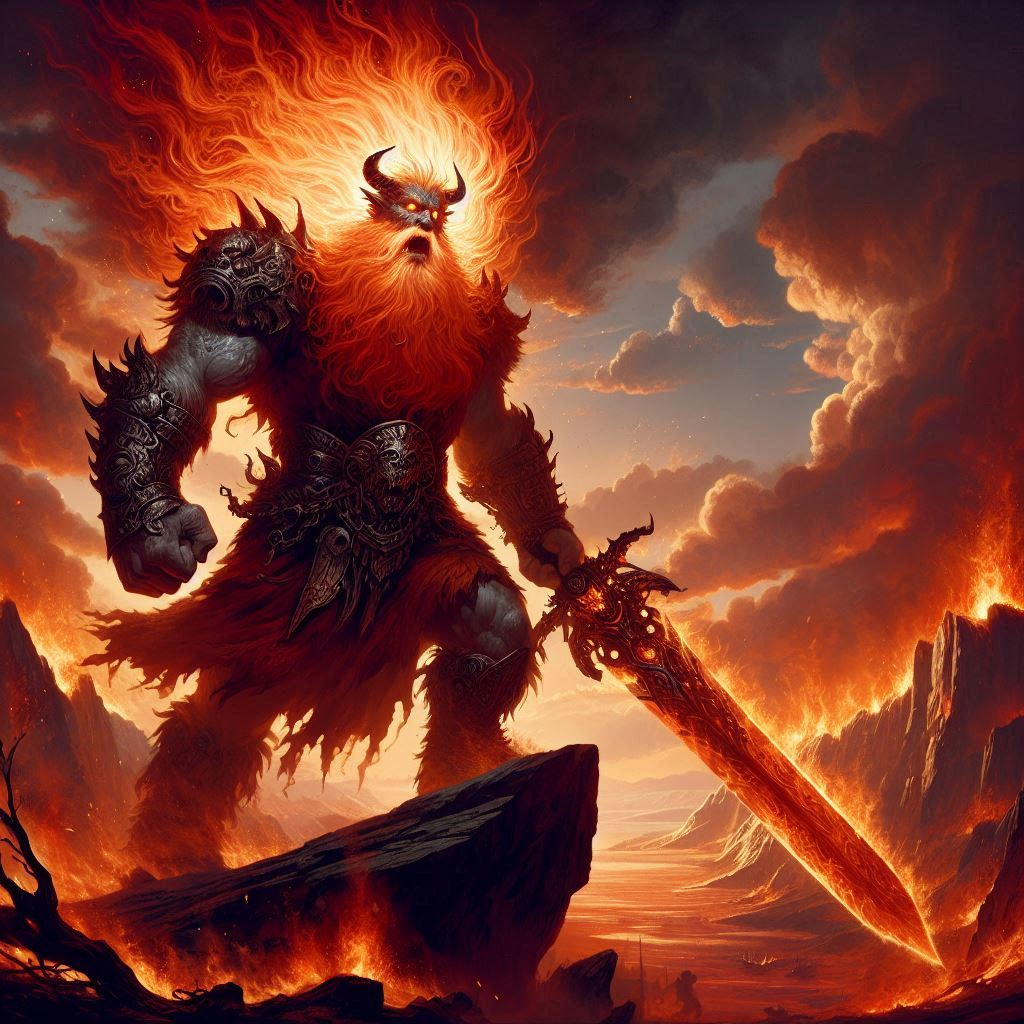
“Brothers shall fight | and fell each other,
And sisters’ sons | shall kinship stain;
Hard is it on earth, | with mighty whoredom;
Axe-time, sword-time, | shields are sundered,
Wind-time, wolf-time, | ere the world falls;
Nor ever shall men | each other spare.”
– Völuspá, Poetic Edda
Ragnarök is a prophecy in which the world ends. A last, epic battle in which Order and chaos clash and annihilate each other. Most of our beloved gods and characters are bound to die, and that includes Odin. The Allfather will face Fenrir, the great wolf and son of the traitor god Loki and will be eaten by it.
His death will then be avenged by his son Víðarr who will strike the wolf in the heart with his sword:
Now comes to Hlin | yet another hurt,
When Othin fares | to fight with the wolf,
And Beli’s fair slayer | seeks out Surt,
For there must fall | the joy of Frigg.
Then comes Sigfather’s | mighty son,
Vithar, to fight | with the foaming wolf;
In the giant’s son | does he thrust his sword
Full to the heart: | his father is avenged.
– Völuspá, Poetic Edda
Mind you, Ragnarök is a prophecy of events that still did not happen, so Odin is not currently dead. Treat it as the Apocalypse in the Christian book of Revelation.
The prophecy was told to Odin by a Volva -a seer- who was summoned by the god from her grave. This also makes Odin a necromancer, which is also another cool point.
The future death of Odin also marks the end of this article!
Conclusion
I really hope that you enjoyed this article. This was the first lore article not related to videogames, and it was a real blast to write. While I tried my best to be as precise as possible, there can be mistakes here and there, and I really count on you to point them out so that I can correct them as fast possible!
Stay tuned for more articles about both mythology and video games! See you in the next one!
